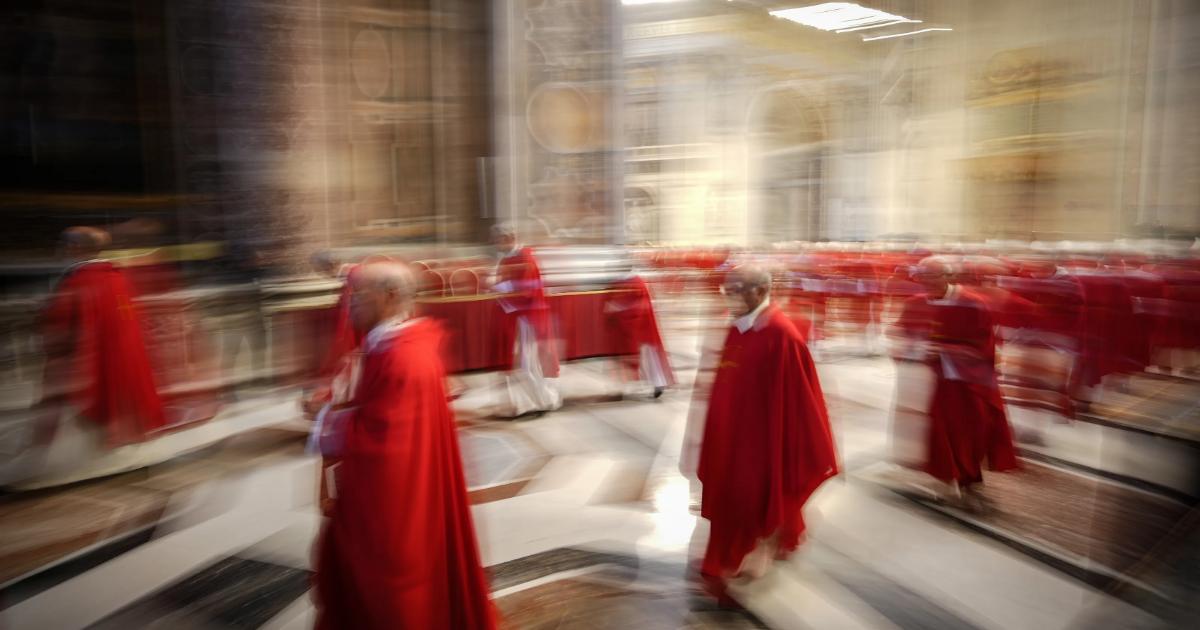
With the death and funeral of Pope Francis comes the start of a sacred process of determining a successor that dates back many centuries.
The papal conclave is private election held behind closed doors of Vatican City’s Sistine Chapel, where 135 cardinals vote on who will serve as the next the head of the Catholic Church.
The Vatican has revealed the date for when Roman Catholic cardinals from across the globe will meet in Rome and begin an election process that has previously lasted from around 25 hours to nearly three years.
Pope Francis, who previously went by Jorge Mario Bergoglio, died on April 21 at 88 following a long respiratory illness.
In March 2013, the Argentina native was elected as the 266th pope after previously serving as a cardinal. On the fifth ballot of his conclave, he received 90 votes out of 115, surpassing the necessary threshold of 77. He soon assumed the role, with his papal reign lasting over 12 years.
With the focus now turning to the selection of his successor, here’s what to know about the upcoming conclave.
When does the 2025 conclave start?
The papal conclave is set for May 7, when the cardinals will meet for morning Mass at St. Peter’s Basilica with the purpose of praying for the wisdom needed to choose the next pope.
Conclaves are usually held 15 to 20 days after the pope’s death.
How long do conclaves last?
There is not set timeline for conclaves. The longest modern conclave lasted over five days when Pope Pius X was elected in 1903.
Where will the conclave take place?
The conclave will take place in the nearby Sistine Chapel, a chapel in Vatican City renowned for its Renaissance art that was closed to the public April 28. It will remain off-limits until the conclave is completed.
How do conclaves work?
The U.S. Conference of Catholic Bishops spells out in detail the protocols for the election.
Throughout the election process, the cardinal electors must refrain from sending letters or engaging in conversations, including phone calls, except in emergencies. The cardinals will vote by secret ballot, proceeding one by one up to Michelangelo’s fresco of the Last Judgment to say a prayer and drop the double-folded ballot into a large chalice.
Four rounds of balloting take place each day until a candidate receives two-thirds of the vote. The result of each ballot are counted out loud and recorded by three cardinals designated as recorders. If no one receives the necessary two-thirds of the vote, the ballots are burned in a stove near the chapel with a mixture of chemicals to produce black smoke.
If the electors fail to reach an agreement on a candidate after three days of inconclusive voting, a break of up to one day is allowed for prayer, free discussion among voters and a “brief spiritual exhortation,” according to the Vatican.
When a cardinal receives the necessary two-thirds vote, the dean of the College of Cardinals asks him whether he is willing to serve.
If he is, the new pope chooses a papal name and is dressed in papal vestments. The ballots of the final round are burned with chemicals producing white smoke to signal to the world the election of a new pope.
Is that real smoke? News of new pope delivered by stoves, chemicals and ballots
Who can be pope?
Technically, the cardinals need not choose a fellow cardinal to lead the church. The only actual qualifications are being male and being baptized as a Catholic.
It has been almost 650 years, however, since the last non-cardinal claimed the job. Italian Archbishop Bartolomeo Prignano was unanimously elected in 1378 and became Pope Urban Vl.
His death fueled the Western Schism, a period when a split in the church caused multiple popes to gain election at the same time.
What was the longest conclave ever?
The longest conclave in history took place in the 13th century. The papacy was vacant for nearly three years, or 34 months, until Gregory X was elected in 1271, according to the Catholic news agency EWTN Vatican.
The cardinals had gathered in the city of Viterbo, about 50 miles north of Rome, where Pope Clement IV died in 1268. French cardinals wanted a French pope, and Italian cardinals wanted an Italian to lead the church. Local authorities finally locked the cardinals in a palace to help expedite the process that led to the election of Gregory, a native of Italy with strong ties to France.
Gregory formalized rules for future votes, and the term “conclave” comes from his restructure of the process.
How many popes have there been?
The Roman Catholic Church has seen 266 popes during its nearly 2,000-year history with the first being St. Peter, the apostle of Jesus Christ. Francis was the most recent pope, who was elected following the resignation of Pope Benedict XVI in 2013.
Contributing: Reuters; Marc Ramirez, Marco della Cava, Christopher Cann, USA TODAY
